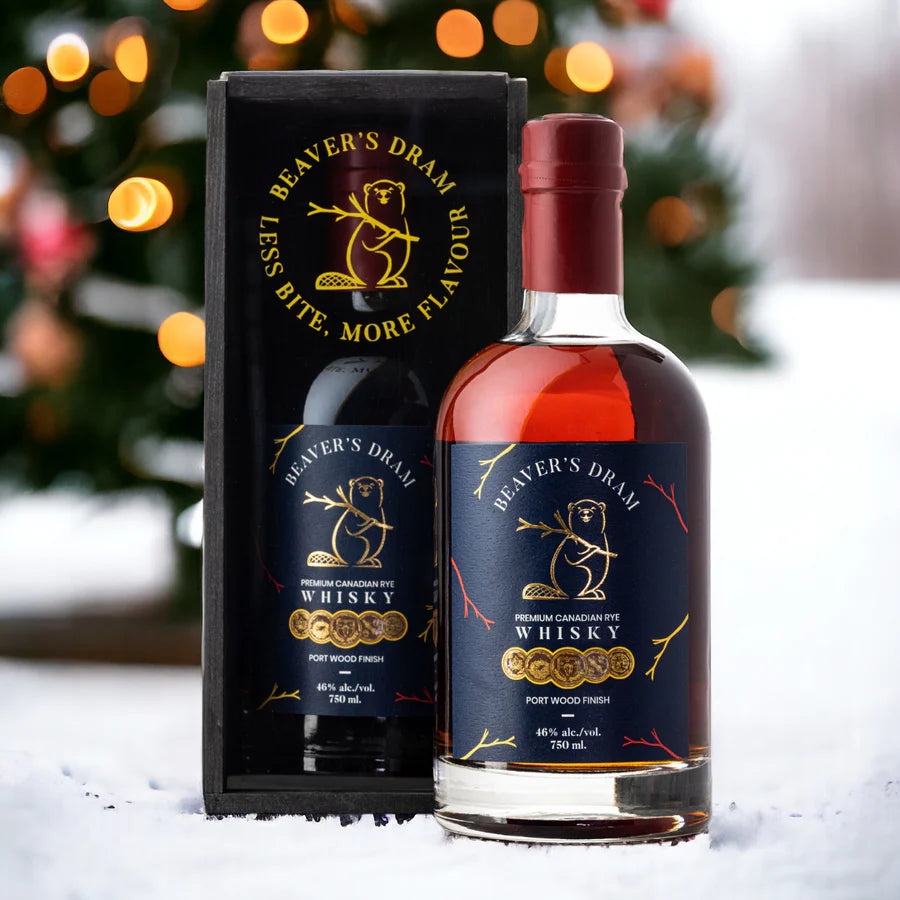
How to Properly Store and Serve Spirits
Storing and serving spirits correctly is essential to maintaining their quality and enhancing the drinking experience. Whether you’re a casual drinker or a connoisseur, understanding the best practices for handling your favourite liquors can make a significant difference. In this comprehensive guide, we’ll explore how to properly store and serve spirits, ensuring that every sip is as delightful as intended.
1. Understanding Different Types of Spirits

Before diving into storage and serving techniques, it’s crucial to understand the various types of spirits. The most common categories include:
- Whiskey: Including bourbon, rye, scotch, and other variations.
- Vodka: A clear, neutral spirit often enjoyed in cocktails.
- Gin: Known for its botanical flavours, particularly juniper.
- Rum: Made from sugarcane or molasses, with varieties ranging from light to dark.
- Tequila: Produced from the blue agave plant, primarily in Mexico.
- Brandy: Distilled from wine or fermented fruit juice.
- Liqueurs: Sweetened spirits infused with flavors, such as fruit, herbs, or spices.
Each type of spirit has unique characteristics that influence how it should be stored and served.
2. Proper Storage of Spirits

A. Temperature
Temperature plays a pivotal role in preserving the quality of spirits. Here are some guidelines for different types of spirits:
- Whiskey: Store at room temperature (15-20°C or 59-68°F). Avoid temperature fluctuations.
- Vodka: Can be stored at room temperature, but many prefer it chilled in the freezer.
- Gin: Room temperature is ideal, but like vodka, it can be chilled.
- Rum: Store at room temperature.
- Tequila: Room temperature is best for preserving flavors.
- Brandy: Room temperature storage helps maintain its complex flavors.
- Liqueurs: Store at room temperature, but cream-based liqueurs should be refrigerated.
B. Light Exposure
Light, particularly UV light, can degrade spirits over time. To prevent this:
- Store bottles in a dark place or a cabinet.
- Use UV-protective film on windows if storing spirits in a visible location.
- Keep bottles in their original boxes if they come with one.
C. Humidity
Humidity control is crucial, especially for bottles sealed with cork:
- Maintain a humidity level between 50-70% to prevent corks from drying out and letting air in.
- Store bottles upright to minimize cork contact with the spirit.
D. Air Exposure
Air is the enemy of spirits, leading to oxidation and flavor loss:
- Ensure bottles are sealed tightly after each use.
- Use inert gas sprays (e.g., argon) to displace oxygen in partially filled bottles.

E. Vibration
Minimize vibrations to prevent the spirits from getting agitated, which can affect the aging process and flavor. Store spirits in a stable, quiet location.
F. Storage Duration
Different spirits have different optimal storage durations:
- Whiskey: Can be stored for an indefinite period if unopened. Once opened, it's best consumed within 1-2 years.
- Vodka: Indefinite shelf life if unopened. Once opened, it’s best enjoyed within 1-2 years.
- Gin: Unopened, it can last indefinitely. After opening, it’s best consumed within a year.
- Rum: Dark rum can last indefinitely if unopened. Light rum is best within 6 months to a year after opening.
- Tequila: Indefinite shelf life if unopened. Once opened, consume within 6-8 months for best quality.
- Brandy: Unopened, it can be stored indefinitely. After opening, it’s best enjoyed within 1-2 years.
- Liqueurs: Generally, have a shorter shelf life. Cream-based liqueurs should be consumed within 6 months to a year.
3. Serving Spirits
A. Glassware
Choosing the right glass enhances the tasting experience:
- Whiskey: Use a Glencairn glass or a tumbler.
- Vodka: Serve in a shot glass or a highball glass for cocktails.
- Gin: A highball glass for gin and tonics, a coupe or martini glass for cocktails.
- Rum: Use a rocks glass or a snifter for aged rums.
- Tequila: A shot glass for blanco, a snifter or Glencairn for aged variants.
- Brandy: A snifter glass allows for proper swirling and aroma concentration.
- Liqueurs: Serve in cordial or shot glasses.

B. Temperature
Serving temperature impacts the aroma and flavour profile:
- Whiskey: Room temperature or slightly chilled with ice or a few drops of water.
- Vodka: Serve chilled, ideally from the freezer.
- Gin: Serve chilled in cocktails or at room temperature neat.
- Rum: Room temperature or slightly chilled for aged rums, with ice for light rums.
- Tequila: Room temperature or chilled for blanco, room temperature for aged variants.
- Brandy: Serve at room temperature.
- Liqueurs: Serve chilled or at room temperature, depending on the type.
C. Pouring Techniques
- Whiskey: Pour 1.5-2 oz for neat serving, adjust for cocktails.
- Vodka: 1-1.5 oz for neat or cocktails.
- Gin: 1.5 oz for cocktails, adjust for neat serving.
- Rum: 1.5-2 oz for neat, adjust for cocktails.
- Tequila: 1-1.5 oz for neat, 2 oz for cocktails.
- Brandy: 1.5-2 oz for neat serving.
- Liqueurs: 1-1.5 oz for neat or cocktails.
D. Presentation
Presentation enhances the drinking experience:
- Use clean, polished glassware.
- Consider garnishes (e.g., citrus peels, herbs) for added aroma and visual appeal.
- Serve on a tray with appropriate accompaniments (e.g., water, ice).

E. Enhancing the Experience
- Whiskey: Adding a few drops of water can open up flavors.
- Vodka: Enjoy with traditional accompaniments (e.g., caviar, pickles).
- Gin: Experiment with different tonics and garnishes.
- Rum: Pair with dark chocolate or tropical fruits.
- Tequila: Serve with lime and salt for a classic experience.
- Brandy: Pair with cigars or dark chocolate.
- Liqueurs: Serve with dessert or in creative cocktails.
F. Pairing Spirits with Food
Pairing spirits with food can elevate both the drink and the meal. Here are some suggestions:
- Whiskey: Pairs well with smoked meats, cheese, and dark chocolate.
- Vodka: Complements seafood, particularly smoked salmon and caviar.
- Gin: Matches with light dishes like salads, seafood, and poultry.
- Rum: Pairs with tropical fruits, barbecue, and rich desserts.
- Tequila: Goes well with Mexican cuisine, particularly spicy dishes.
- Brandy: Excellent with rich desserts, foie gras, and nuts.
- Liqueurs: Can be paired with or used in desserts, or enjoyed as a digestif.
Understanding and describing the flavors and aromas of spirits can enhance the enjoyment and appreciation:
- Whiskey: Look for notes of caramel, vanilla, oak, and spices.
- Vodka: Often clean and neutral, but can have subtle notes of grain or fruit.
- Gin: Juniper is dominant, with additional botanical notes like citrus, herbs, and spices.
- Rum: Flavors range from light and sweet (sugarcane, molasses) to rich and spicy (dark chocolate, dried fruit).
- Tequila: Look for earthy, vegetal notes with hints of citrus and pepper.
- Brandy: Rich and complex with notes of dried fruit, vanilla, and oak.
- Liqueurs: Highly varied, with prominent sweet, fruity, herbal, or spicy flavors.
4. Tips for Collectors
If you’re a collector, these tips will help you maintain the value and quality of your spirits collection:
- Document your collection: Keep records of purchase dates, storage conditions, and tasting notes.
- Invest in proper storage: Consider a dedicated spirits cabinet or cellar with controlled conditions.
- Rotate your stock: Use older bottles first to ensure they don’t deteriorate over time.
- Insurance: Insure valuable collections to protect against loss or damage.
- Limited Editions: Keep an eye out for limited edition releases and special bottlings, as these can become valuable collector’s items.
- Networking: Join collector’s groups or forums to stay informed about new releases, auctions, and trade opportunities.
- Tasting Events: Host or attend tasting events to share knowledge and experience with other enthusiasts.
5. Common Mistakes to Avoid
- Exposing to sunlight: Can degrade the spirit and alter flavors.
- Improper sealing: Leads to oxidation and flavor loss.
- Storing horizontally: For spirits with corks, this can lead to cork deterioration.
- Inconsistent temperature: Fluctuations can affect the quality of the spirit.
- Neglecting bottle cleanliness: Dust and residue can affect the spirit’s presentation and taste.

6. Advanced Storage Techniques
For those who want to take their storage practices to the next level, consider these advanced techniques:
Although wine fridges are designed for wine, they can also be used to store spirits at a consistent temperature:
- Temperature Control: Set the fridge to a temperature suitable for your spirits collection.
- Humidity Control: Ensure the fridge has proper humidity control to protect corks.
- Shelving: Adjustable shelves allow for the accommodation of various bottle sizes.
B. Custom Cellars
Creating a custom cellar specifically for spirits can provide optimal storage conditions:
- Temperature and Humidity: Install climate control systems to maintain consistent temperature and humidity levels.
- Lighting: Use LED lighting to minimize heat and UV exposure.
- Security: Install locks and alarms to protect valuable collections.
C. Spirit Decanters
Decanting spirits can be beneficial for both aesthetic and practical reasons:
- Aging: Some spirits, particularly whiskey and brandy, can benefit from decanting to aerate and soften flavors.
- Presentation: Decanters add a touch of elegance to serving spirits.
- Storage: Ensure decanters are sealed tightly to prevent air exposure.
7. The Role of Bar Tools
Having the right bar tools can significantly enhance the serving experience:
A. Essential Bar Tools
- Jigger: For precise measurement of spirits.
- Shaker: Essential for mixing cocktails.
- Strainer: To strain cocktails into the glass.
- Stirrer: For stirring drinks that don't require shaking.
- Muddler: For muddling herbs and fruits in cocktails.
- Ice Tools: Ice cube trays, ice buckets, and tongs.
B. Advanced Bar Tools
- Bar Spoon: For precise stirring and layering drinks.
- Channel Knife: For creating citrus twists and garnishes.
- Zester: For zesting citrus fruits.
- Bar Mat: To keep the bar area clean and organized.
- Julep Strainer: For straining stirred cocktails.
Proper maintenance of glassware ensures clarity and hygiene:
- Cleaning: Hand wash delicate glassware to avoid damage.
- Polishing: Use a microfiber cloth to polish glassware and remove any spots.
- Storage: Store glassware in a dust-free environment, preferably upside down on a rack.
8. Creating the Perfect Home Bar
Creating a home bar tailored to your tastes and needs can enhance your spirits experience:
A. Stocking Your Bar
- Selection: Choose a variety of spirits to cater to different preferences.
- Quantity: Keep enough stock to entertain guests but avoid overstocking to ensure freshness.
- Mixers and Garnishes: Stock essential mixers like tonic, soda, and juices, as well as garnishes like citrus, herbs, and olives.

B. Bar Layout
- Accessibility: Arrange your bar so that everything is within easy reach.
- Organization: Use shelves and racks to organize bottles, glassware, and tools.
- Aesthetics: Decorate your bar area to create an inviting atmosphere.
C. Hosting Tips
- Preparation: Prepare garnishes and mixers in advance.
- Variety: Offer a range of spirits and cocktails to cater to different tastes.
- Knowledge: Be ready to share information about the spirits you’re serving to enhance the experience for your guests.

9. Conclusion
Proper storage and serving of spirits are crucial to maintaining their quality and enhancing the drinking experience. By understanding the specific needs of different types of spirits and following best practices, you can enjoy your favorite drinks at their best. Whether you’re savoring a fine whiskey, mixing a gin and tonic, or indulging in a sweet liqueur, the right storage and serving techniques make all the difference.
Remember, each spirit has its unique characteristics and deserves to be treated with care. So, invest the time and effort into proper storage and serving, and your palate will thank you. By following the guidelines in this comprehensive guide, you can ensure that your spirits are always stored and served to perfection. Enjoy the journey of discovering the rich and diverse world of spirits, one well-stored bottle at a time!
